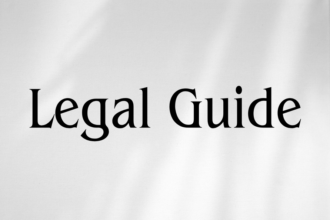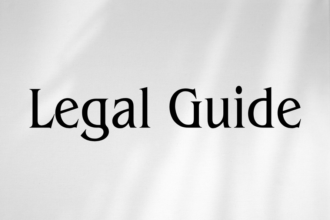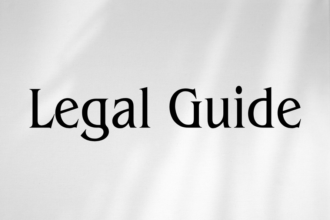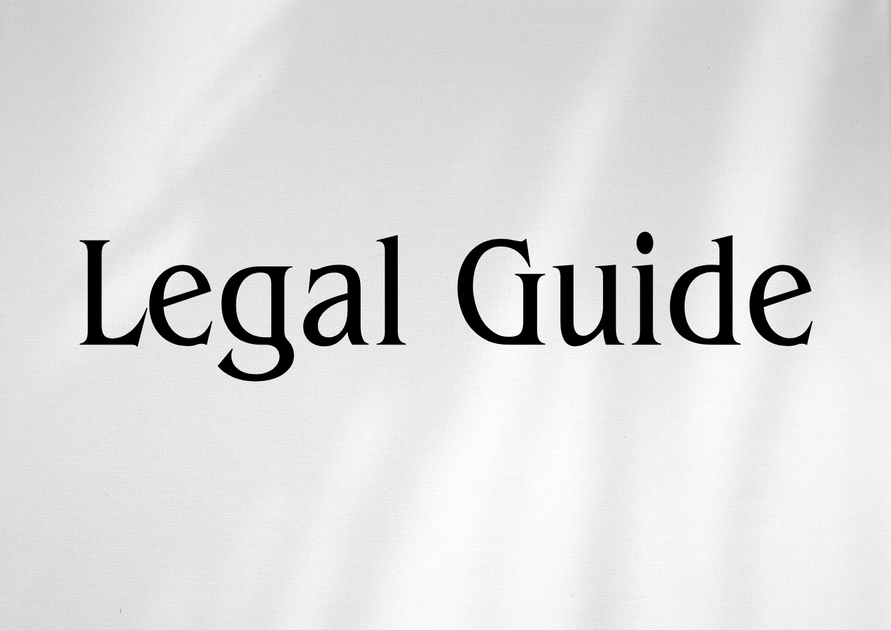Introduction
Private jet operations are emblematic of the United Arab Emirates’ (UAE) dynamic aviation sector, reflecting both its status as a global business hub and its commitment to regulatory excellence. As demand for private and charter aviation surges—whether for corporate executives, VIP clients, or luxury tourism—the legal landscape governing these operations has evolved rapidly. Recent regulatory updates, notably those introduced in 2023 and anticipated for 2025, underscore the UAE’s ambition to balance innovation, safety, and compliance. For businesses, investors, and legal practitioners navigating this highly specialized sector, a nuanced understanding of charter licensing, compliance requirements, and associated risks is indispensable. This article provides an authoritative analysis of the legal regime governing private jet operations and charter licensing in the UAE, drawing upon recent Federal Decrees, General Civil Aviation Authority (GCAA) guidelines, and Ministry of Economy regulations. Readers will gain practical insights into compliance strategies, risk management, and the future trajectory of the UAE’s private aviation sector.
Table of Contents
- Statutory Framework for Private Jet Operations in the UAE
- Key Requirements for Charter Licensing
- Regulatory Bodies and Jurisdictional Overview
- Comparison: Old vs. New Charter Licensing Regulations
- Risk Mitigation and Compliance Strategies
- Case Studies and Practical Scenarios
- Enforcement, Liabilities, and Penalties
- Future Trends and Strategic Recommendations
- Conclusion and Best Practices
Statutory Framework for Private Jet Operations in the UAE
Overview of Relevant Laws and Regulations
The primary legal sources governing private jet operations and charter licensing in the UAE are:
- Federal Law No. (20) of 1991 (as amended) – Organizing Civil Aviation in the UAE
- GCAA Civil Aviation Regulations (CARs) – Especially, CAR Part VI (Air Operator Certification & Administration)
- UAE Cabinet Resolution No. 16 of 2021 – On Civil Aviation Safety Oversight
- GCAA Advisory Circulars and Safety Directives
- Ministerial Resolutions and Local Emirate Aviation Authority guidelines (e.g., Dubai Civil Aviation Authority)
Federal Law No. (20) of 1991 establishes the fundamental principles for the registration, ownership, and operation of civil aircraft in the UAE, defining the requirements for both commercial and private operations. The General Civil Aviation Authority (GCAA), created under Federal Law No. (4) of 1996, is the principal regulatory authority with nationwide scope, responsible for licensing, oversight, and enforcement.
Scope of Regulation
The UAE’s legal regime distinguishes between:
- Private Jet Operations: Where aircraft are operated for the owner’s private business or leisure purposes, not for hire or reward.
- Commercial Charter Operations: Where aircraft are made available for carriage of passengers or cargo for remuneration or hire.
This distinction is critical for licensing, tax, and operational compliance. GCAA CARs, especially Part VI, detail the operational standards, certification requirements, and safety obligations that differ between private and commercial operators.
Recent Legal Updates: UAE Law 2025 Provisions
With the UAE’s Vision 2030 goals and its expanding role in global executive mobility, both national and Emirate-level authorities have signaled further tightening of private jet compliance, with anticipated Federal Decree reforms scheduled for 2025. These will include enhanced security vetting for non-scheduled operators, digital recordkeeping mandates, and closer scrutiny of beneficial ownership of foreign-registered aircraft operating in the UAE.
Key Requirements for Charter Licensing
Who Needs a Charter License?
Any individual or company seeking to offer private jet charter flights for hire in, to, or from UAE territory must hold an Air Operator Certificate (AOC) under GCAA regulations or, for Dubai, a parallel approval from the Dubai Civil Aviation Authority (DCAA). Private operators flying only their own executives and guests may seek an exemption, but such cases are closely reviewed for compliance to ensure there is no disguised commercial activity.
Step-by-Step Charter Licensing Process
- Submission of Application to the GCAA, including company details, aircraft specifications, manuals, and safety protocols.
- Security Vetting and Due Diligence, including background checks on directors, beneficial owners, and prospective crew members.
- Aircraft Inspection, airworthiness review, and confirmation of adequate insurance (per GCAA minimum standards).
- Demonstration of Operational Capability, including proof of trained personnel and documented Standard Operating Procedures (SOPs).
- Issue of Air Operator Certificate (AOC), subject to periodic audit and renewal.
Practical Consultancy Insight: Legal practitioners should advise clients to prepare a detailed gap analysis before submitting a charter license application, auditing both document readiness and operational capabilities against GCAA audit checklists.
Supporting Requirements and Ongoing Compliance
- Mandatory safety reporting and incident disclosure (as per GCAA Circular AC-OPS-21)
- Maintaining updated maintenance logs and digital records under Ministry of Economy guidelines
- Annual financial disclosures and submission of accounts to relevant authorities
Visual Suggested: A process flow diagram of the charter licensing application stages, highlighting risk points and approval timelines for enhanced clarity in client briefings.
Regulatory Bodies and Jurisdictional Overview
Main Regulatory Stakeholders
- General Civil Aviation Authority (GCAA): Nationwide licensing, oversight, and enforcement
- Dubai Civil Aviation Authority (DCAA): Additional jurisdiction within Dubai, applicable for aircraft registered or operating from Dubai-based airports
- Ministry of Economy: Economic licensing for aviation companies, foreign investment, and beneficial ownership checks
- Emirate-Specific Aviation Authorities: e.g., Abu Dhabi Civil Aviation Authority for local endorsements
Jurisdictional Considerations
The interplay between federal and Emirate-level regulation requires careful navigation. For example, while GCAA holds primacy under Federal Law No. (20) of 1991, commercial charter operators must also obtain Economic Department trade licenses for aviation activities and satisfy Emirate-specific conditions (e.g., minimum capital requirements in Abu Dhabi, additional environmental screening in Dubai).
Practical Insight:
Legal counsel should conduct a multi-layer regulatory mapping at the outset of any charter project, to identify and reconcile divergent federal and local obligations—including those related to labor law, import/export of aircraft, and customs protocols.
Comparison: Old vs. New Charter Licensing Regulations
With the rollout of new GCAA guidance in 2023 and anticipated Federal Decree updates in 2025, there are major differences in the charter licensing environment compared to previous years. The following table highlights key contrasts:
| Aspect | Prior to 2023 | 2023–2025 Update |
|---|---|---|
| Security Checks | Basic director and pilot vetting | Expanded due diligence, beneficial owner scrutiny, foreign partner checks |
| Recordkeeping | Hard copy logs permitted | Digital/cloud-based records mandatory |
| Aircraft Standards | ICAO Category 2 accepted | ICAO Category 1 compliance now required for all charter |
| Financial Transparency | Annual summary accounts sufficient | Quarterly reporting; beneficial ownership transparency |
| Penalties | Primarily administrative fines | Increased criminal sanctions and asset seizure risk |
| Emirate Coordination | Federal license generally sufficient | Mandatory dual clearance in certain emirates (e.g., Dubai/Abu Dhabi) |
Visual Suggested: Penalty Comparison Chart
A dynamic table or infographic contrasting historical and current penalty regimes for illegal charter operations significantly boosts client understanding of compliance urgency.
Risk Mitigation and Compliance Strategies
Key Risks for Private Jet Operators and Charter Companies
Non-compliance with charter licensing and operational regulations exposes organizations to risks including:
- Substantial administrative fines (up to AED 5 million for repeat violations under GCAA Circular No. 45 of 2024)
- Aircraft impoundment or suspension of AOC
- Criminal prosecution of responsible directors (especially in cases of false documentation or illegal charter)
- Business disruption and reputational damage from enforcement actions
Best Practice Compliance Approaches
- Institutionalize a robust internal compliance program, including mandatory pre-flight regulatory checklists and quarterly compliance audits
- Invest in digital recordkeeping infrastructure
- Appoint a dedicated Aviation Compliance Officer empowered to liaise with GCAA and Emirate-level regulators
- Conduct annual staff training on changes in aviation law and operational safety
- Engage in preemptive consultation with external legal advisors ahead of any planned change in aircraft utilization or fleet expansion
Compliance Checklist
| Compliance Area | Required Documentation/Procedure | Frequency |
|---|---|---|
| License Status | Valid AOC, Emirate licenses | Annual, and on operational change |
| Records | Digital logs, incident reports | Ongoing, per flight |
| Financial Transparency | Beneficial ownership & quarterly accounts | Quarterly |
| Security Vetting | Board, crew, and beneficial owners | At hiring, renewal |
| Training | Pilot and staff regulatory training | Annual/minimum per regulation |
Visuals such as compliance checklists or audit flowcharts can play a critical role in client onboarding and policy design consultations.
Case Studies and Practical Scenarios
Case Study 1: International Law Firm Launching a UAE Charter Subsidiary
An international law firm establishes a UAE-based aviation arm to facilitate business jet charters for clients and partners across the Gulf. Prior to 2023, it could operate under a single GCAA AOC with streamlined vetting. Under updated rules, the firm must also demonstrate beneficial ownership transparency and integrate a digital compliance reporting system. Failure to update its processes could result in license suspension or penalties exceeding AED 1 million.
Case Study 2: Private Family Office Operating a Fleet for Internal Use
A family office runs a fleet of business jets for moving family members and senior staff. Upon an audit, GCAA identifies occasional third-party flights for “business associates” as clandestine charter operations. The office risks fines and must reform its usage practices, as informal gifting or cost-sharing flights are now scrutinized for hidden commercial activity.
Hypothetical Scenario: Non-Compliant Maintenance Records
Operator X, headquartered in Abu Dhabi, fails to keep updated digital maintenance logs for one of its jets. During a spot check, GCAA inspectors determine that maintenance intervals were not logged per the CAR. The jet is grounded pending investigation, inflicting financial and reputational losses. Proactive investment in automated recordkeeping, as recommended by legal counsel during compliance reviews, could have avoided the disruption.
Enforcement, Liabilities, and Penalties
Regulatory Powers and Sanctions
- Administrative Powers: GCAA may suspend, revoke, or refuse to renew an operator’s AOC for non-compliance under Article 15 of Federal Law No. (20) of 1991.
- Financial Penalties: Fines scale from AED 50,000 to AED 5 million for serious or repeat violations, under Cabinet Resolution No. 16 of 2021 and GCAA Circulars.
- Criminal Liability: Under Article 64 of Federal Law No. (20) of 1991, criminal prosecution is possible for willful breaches (e.g., operation without license, falsification of records, illegal charter brokering).
- Collateral Risks: Asset seizure, reputational damage, and potential disqualification of directors under Ministry of Economy “Fit and Proper” rules.
Practical Note:
Contesting enforcement actions requires immediate legal engagement. The appeals process under GCAA protocols has strict time limits (generally 30 days from sanction). Meticulous documentation and evidence of proactive compliance bolsters the chance of mitigation or overturn on appeal.
Future Trends and Strategic Recommendations
Anticipated Regulatory Developments
With the UAE’s drive to become an international business and travel hub, further regulatory enhancements are anticipated in 2025–2027, including:
- Stricter foreign ownership disclosure requirements for aviation companies
- Integration of digital trust platforms for aircraft logbooks, facilitating GCAA real-time oversight
- Standardized environmental screening for all jets operating in/out of UAE major airports
Strategic Recommendations for Stakeholders
- Audit all private and charter operations against the latest GCAA/Emirate regulations at least annually
- Future-proof compliance policies with scalable digital solutions and ongoing legal reviews
- Invest in robust cybersecurity for digital aviation records
- Engage proactively with authorities and participate in GCAA advisory forums to influence policy
Conclusion and Best Practices
As the UAE solidifies its leadership in private and charter aviation, the legal environment will only become more sophisticated and compliance-driven. For businesses, family offices, and charter operators, the imperative is clear: implement state-of-the-art compliance frameworks and remain vigilant as regulations evolve. Legal counsel remains crucial—not just for avoiding fines or sanctions, but for securing long-term operational viability and harnessing the opportunities of a sector on the rise. By anticipating legal updates, investing in digital compliance technologies, and fostering a culture of transparency, stakeholders can confidently navigate the complexities of the UAE aviation market in 2025 and beyond.




